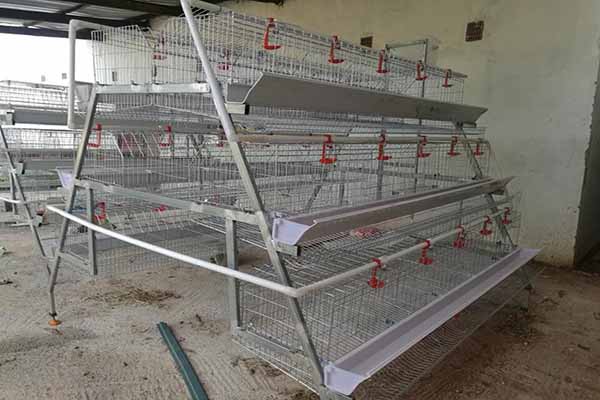What to Do If Ventilation in Chicken Farms in Tanzania Is Poor
Time : 2025-06-25
Poor ventilation in chicken farms can lead to a range of health issues for the birds, as well as decreased productivity and financial losses for the farm owner. In Tanzania, where poultry farming is a significant sector of the economy, it is crucial to address ventilation problems promptly and effectively. This article will outline the steps to take if you find that the ventilation in your chicken farm in Tanzania is poor, and provide professional advice on how to improve it.
Assessing the Ventilation System
The first step in addressing poor ventilation is to assess the existing system. Here are key areas to examine:
– Airflow: Check if the air is moving sufficiently throughout the barn to provide a comfortable environment for the chickens.
– Temperature and Humidity: Ensure that the temperature and humidity levels are within the optimal range for the chickens.
– Dust and Bioaerosols: Determine if there is excessive dust or bioaerosols in the air, which can lead to respiratory issues in the birds.
– Exhaust Fans and Inlets: Assess the condition and functionality of exhaust fans and inlets.
Steps to Improve Ventilation
1. Increase Air Exchange Rates
– Ensure that there are adequate inlets and outlets for air exchange.
– Use louvers or vent panels that can be adjusted to control airflow.
2. Install Exhaust Fans
– Install high-quality, energy-efficient exhaust fans to remove excess heat and humidity.
– Position fans strategically to ensure even air distribution.
3. Control Temperature and Humidity
– Use evaporative cooling systems to lower the temperature and humidity in the barn.
– Monitor and maintain a consistent temperature and humidity level using thermostats and humidistats.
4. Biological Control of Pests
– Eliminate pests that can disrupt ventilation and reduce air quality, such as flies and mosquitoes.
– Use natural predators or biological control agents like ladybugs and lacewings.
5. Regular Maintenance and Cleaning
– Schedule regular maintenance of ventilation systems, including cleaning filters and fan blades.
– Keep the barn floors clean to reduce dust levels.
Professional Equipment and Solutions
1. Smart Ventilation Systems
– Invest in smart ventilation systems that use sensors to monitor and adjust airflow in real-time.
2. Positive Pressure Systems
– Implement positive pressure systems to introduce clean air into the barn and reduce ammonia levels.
3. Air Filters and Purifiers
– Use high-efficiency particulate air (HEPA) filters to remove dust, dander, and other airborne contaminants.
4. Insulation
– Insulate the barn to retain heat during cooler months and reduce the load on the ventilation system.
Training and Education
1. Worker Training
– Educate your staff on the importance of good ventilation and how to maintain the system effectively.
– Provide training on how to monitor and adjust the ventilation system based on weather conditions and bird health.
2. Professional Consultation
– Seek advice from poultry health professionals and ventilation system experts to tailor the solution to your specific farm needs.
Legal and Regulatory Compliance
Ensure that your ventilation system complies with local regulations and standards to avoid any legal issues. This may include obtaining necessary permits and certifications.
Monitoring and Evaluation
Regularly monitor the effectiveness of the ventilation improvements. Use data loggers and other monitoring tools to track temperature, humidity, and air quality.
Conclusion
Poor ventilation in chicken farms can be a significant problem, but it can be addressed with the right knowledge and equipment. By following these steps, you can improve the ventilation in your Tanzania chicken farm, leading to healthier birds and greater productivity. Always seek professional advice and invest in quality equipment to ensure the best results.












